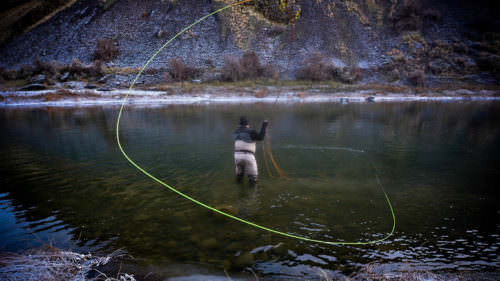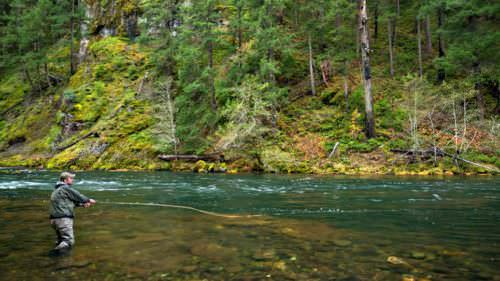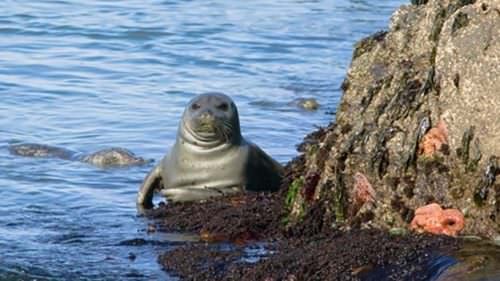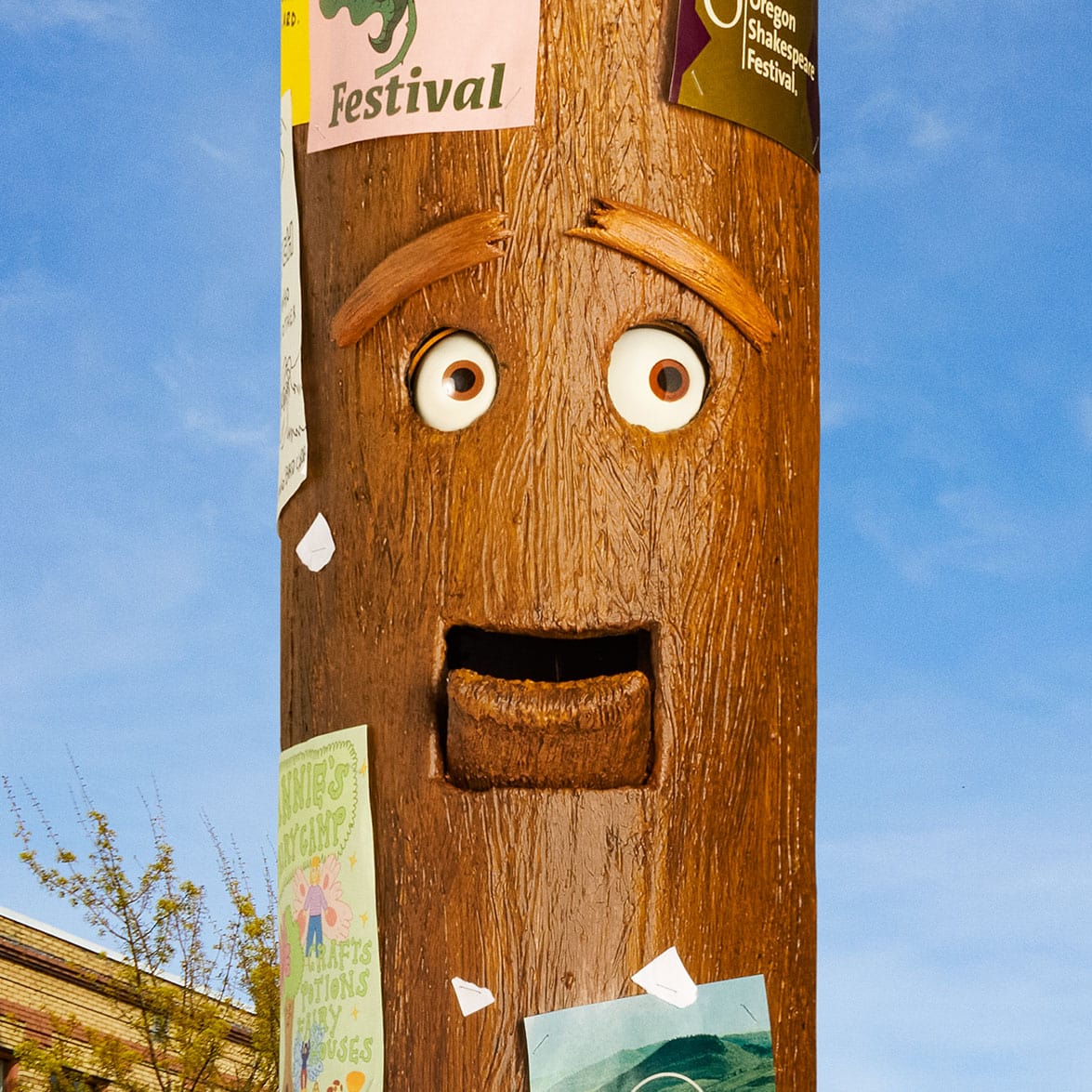It may be colder, wetter and rainy, but wintertime on Oregon’s rivers and lakes means that peak-season crowds have gone and the wildlife — including prime steelhead and trout — is wildly abundant. The lack of people means it’s an intensely peaceful time. And as you prepare to cast your line, you may find yourself hyper-alert to the changes of the season — the rhythm of the river, the call of the birds, and the feel of the mud squishing beneath your boots. When you’re fishing in the wintertime in Oregon, it’s all about the journey.
That’s what Mia Sheppard believes, as a lifelong fisher who now owns Little Creek Outfitters in Maupin with her husband, Marty. “I love the crisp mornings that just revitalize your lungs and your organs, and just let you know you’re alive,” says Sheppard, who is recognized as one of the top women spey casters in the industry. “There’s a deep solitude that you experience.”
One of many experienced fishing outfitters throughout the state, the Sheppards (including their 10-year-old daughter, who loves stand-up paddleboard fishing) have been leading guided tours for fishers of all skill levels since 2003. Little Creek offers year-round multiple-day tours for steelhead, bass and trout along the Lower Deschutes River (which stretches from Pelton Dam near Madras, north to the mouth of the Columbia River), as well as Eastern Oregon’s John Day and Grande Ronde rivers, and the Sandy River (which flows from Mt. Hood to the Columbia River Gorge).
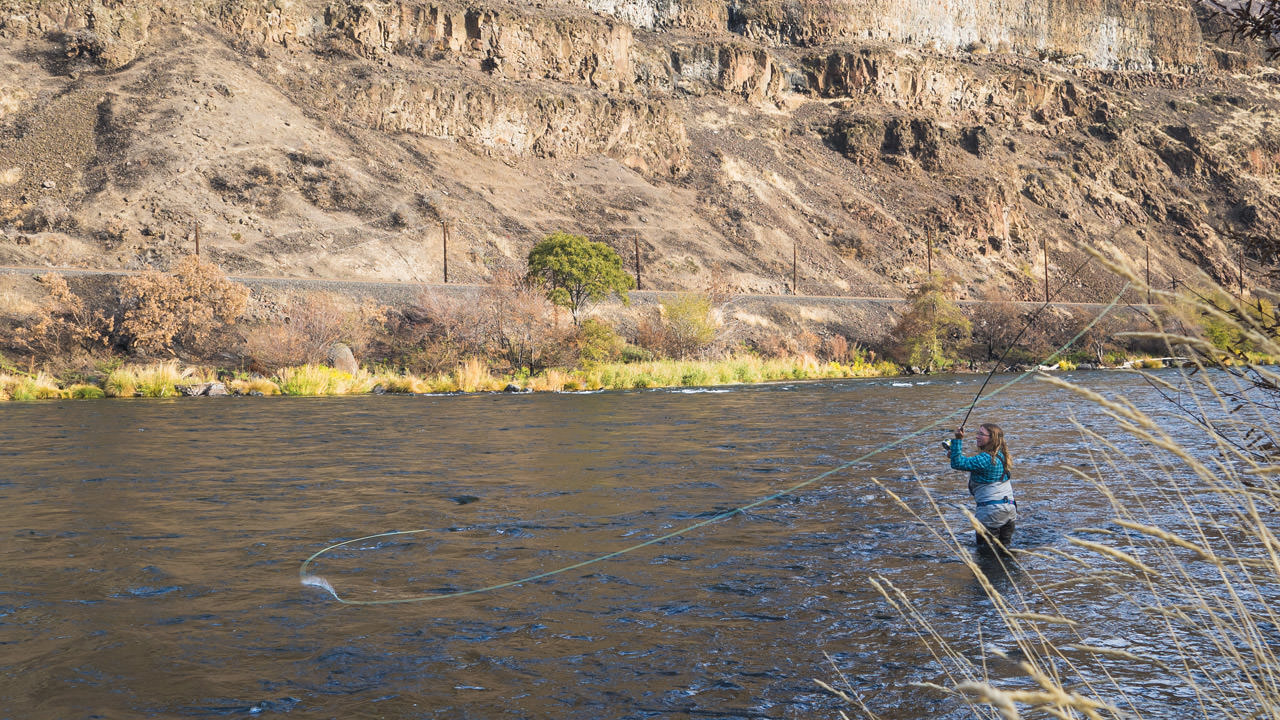
Each waterway has its own distinct personality, but Eastern Oregon’s are among Sheppard’s personal favorites. “I’m completely enamored,” she says. “I love how open they are, and just how rugged and raw. You really feel like you’re in the West when you’re on a desert river. It’s extraordinary to see so much water flowing through a valley that’s dry. Along the riverbank, it’s so lush and green; it’s just a life source for these areas.”
Eastern Oregon’s rivers have lower flows and typically run through late November, then tend to freeze and be suitable again for fishing later in the winter, around February. Meanwhile, the Rogue, Umpqua, Sandy, Metolius, Deschutes and coastal rivers don’t usually freeze and typically offer stellar fishing during the winter months. The Deschutes River does not get a winter steelhead run, so look for summer steelhead here. The best winter steelhead fishing in Oregon can be found in coastal rivers and streams, peaking in January.
Steelhead and trout have an interesting interconnection. Steelhead are trout that decided to make their way from fresh water streams out to the ocean. This makes them anadromous, which means they rear in fresh water as juveniles, migrate out to sea, and eventually return to freshwater to spawn. Trout are born in the river and remain there throughout their life cycles, including spawning. Due to the abundance of food in the ocean, steelhead are much large than trout.
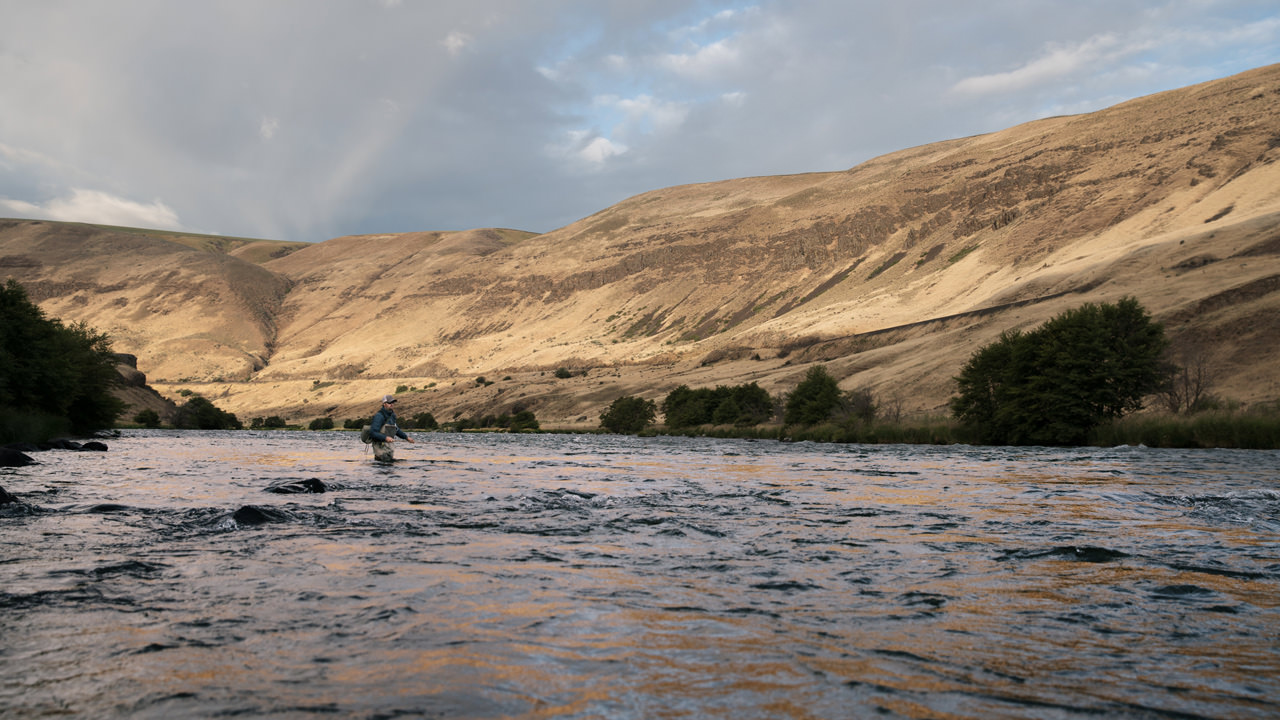
Wherever you choose to go and whatever kind of fish you’re casting for, beginners are in good hands with a guide, since all-inclusive trips include the expertise, gear and logistics so you can enjoy the simple pleasures of the trip: casting, floating, wildlife spotting, hot soup and coffee, and the relief of unplugging from the daily grind. “Catching fish is a bonus, but why pressure yourself,” Sheppard says. “Just sit back, relax and enjoy the experience.”
There are more than 200 fishing guides and outfitters in Oregon, including Mah-Hah Outfitters in Eastern Oregon, ROE Outfitters in Klamath Falls, Northwest Fly Fishing Outfitters in Portland, Trout Creek Outfitters in Creswell (near Eugene), Summer Run Guide Service (North Umpqua) and The Fly Fishing Shop Outfitters in Welches, near Mt. Hood.
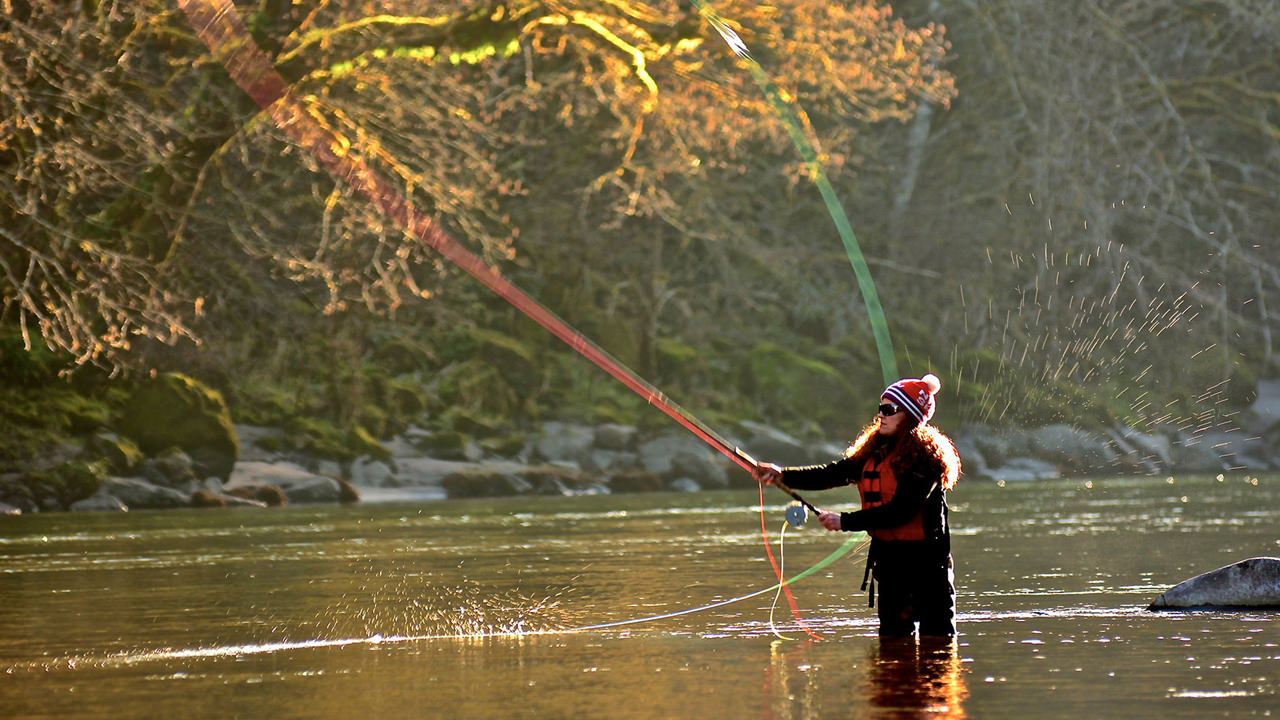
If you go
What to know: Sensitive species like wild steelhead are catch and release in most Oregon waterways, including the John Day River. Anglers must practice safe handling techniques, such as keeping the fish in the water at all times and landing the fish as quickly as possible. Hatchery steelhead are identified by a lack of an adipose fin, and bag limits can be implemented in order to ensure retention during certain times of the year. In order to disperse steelhead fishing, consider casting lines in other waterways, such as: Umatilla, Grand Ronde and Imnaha rivers in Northeast Zone; Lower Deschutes in Central Oregon; Willamette River, Estacada Lake and and Fall Creek in the Willamette Zone; Chetco and Rogue rivers in Southwest Zone.
What to wear: Wear proper gear. Wear multiple layers; wool, waders and wading boots, rain pants, rain coats and synthetic clothing (rather than cotton) are best.
Before you go: Check rules and regulations. You’re not always allowed to keep your catch, so check to see if your river is open to harvest. Visit the Oregon Department of Fish and Wildlife for sport fishing regulations and other information, including licenses, permits, fees and more. The Oregon State Marine Board is also a wealth of resources, including an interactive boating map.
What to bring: Bring the right fishing gear. Research the fish you’re targeting (see these “how to fish” guides and fish identification tips) and carry different flies and tips for steelhead and trout. Check with your local fly shop for advice and gear rentals.
Where to go: Get to know your river. Visit U.S. Geological Survey’s water gauge for current water conditions, which is critical for steelhead since rain causes river levels to fluctuate and steelhead are best found when the river is dropping, not rising. Visit your fly shop and talk with experts there for current fishing reports; also see tips on where to go for easy, family-friendly angling throughout the state, inspiration on steelhead fishing in Tillamook County and introducing kids to the sport.

